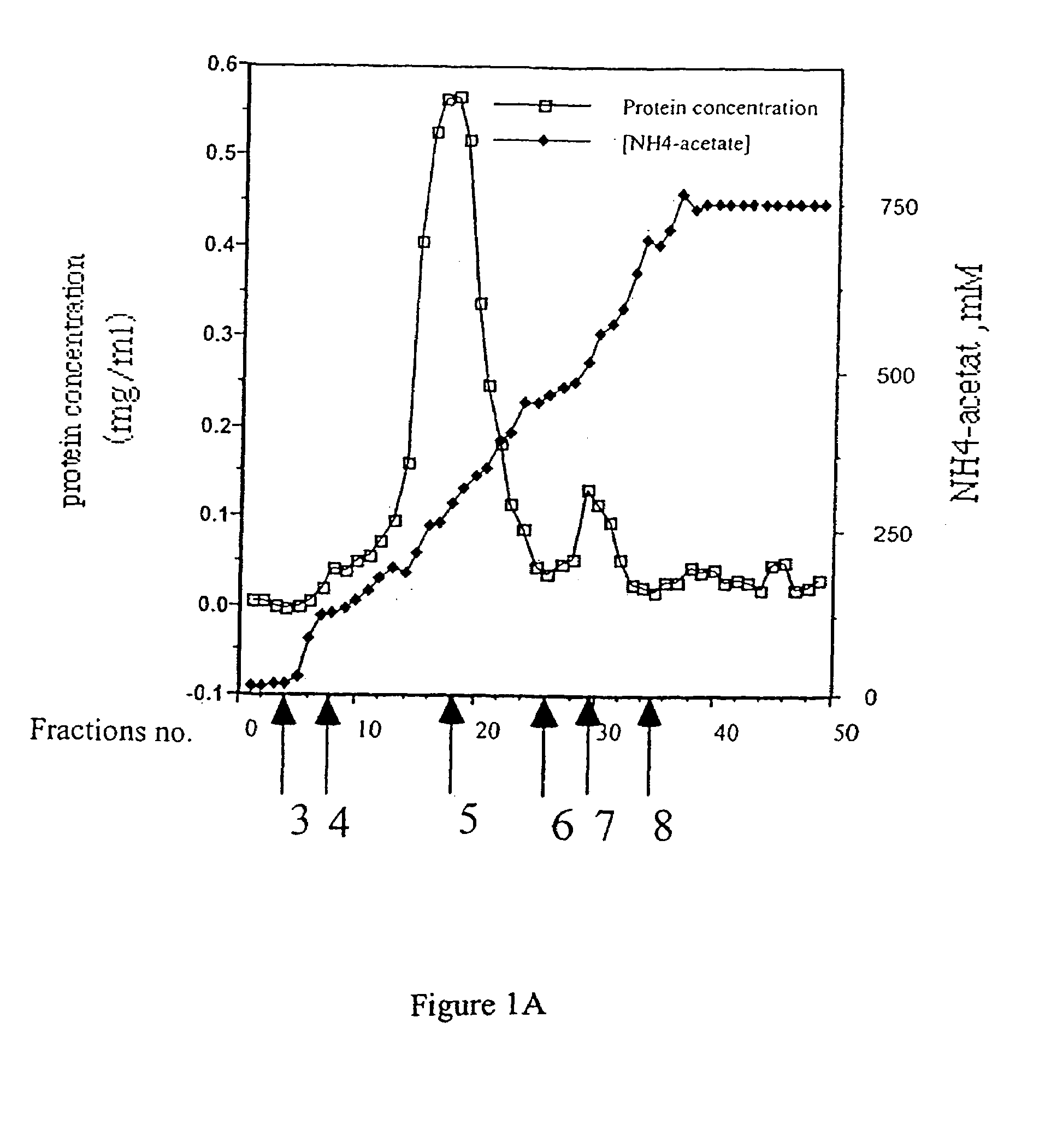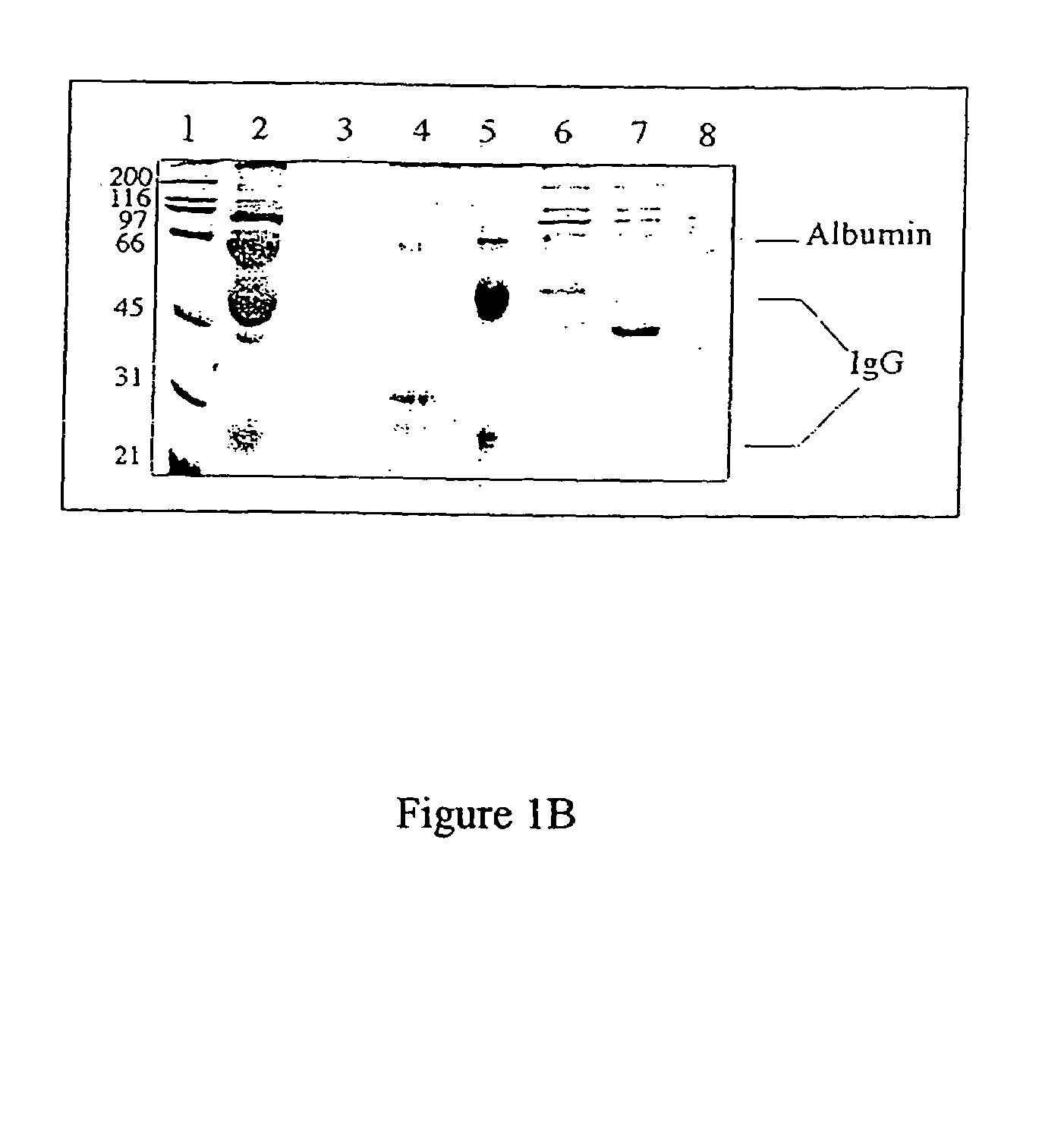Carboxylic cationites and methods of manufacture
a technology of carboxylic cationites and manufacturing methods, which is applied in the direction of cation exchanger materials, ion-exchangers, chemistry apparatus and processes, etc., can solve the problems of limited sorption ability of sorbent materials, inability to fully separate macromolecules, and low chemical stability and thermostability of these materials
- Summary
- Abstract
- Description
- Claims
- Application Information
AI Technical Summary
Benefits of technology
Problems solved by technology
Method used
Image
Examples
example 1
[0056]A 150 ml flask was provided with a stirrer, an inlet pipe for argon and a dropping funnel. Into this flask, 10 ml of methacrylic acid, 1.22 g of HTA and 45.5 ml of 70% acetic acid were poured. After dissolution of the co-monomers, argon was bubbled for 20 minutes. Then an initiator, 0.0569 g ammonium persulfate, was added. Copolymerization was conducted at a temperature of about 55–60° C. for 50 minutes. Next, the temperature was increased to 100° C., and the mixture was held at that temperature for 1 hour. Next, after cooling to a temperature of 25° C., the resultant swollen block of cationite was crushed, washed with water, a 1 N aqueous solution of sodium hydroxide at pH 8, a 1 N aqueous solution of hydrochloric acid and finally with water. The carboxylic cationite was then fractionated in the wet state.
[0057]The yield of cationite in the air-dry state was 10.9 g (96%); the predominant size of particles was 100–200 microns. The exchange capacity with respect to sodium ion w...
example 2
[0058]A 150 ml flask was provided with a stirrer, an inlet pipe for argon and a dropping funnel. Into this flask, 10 ml of methacrylic acid, 133 g of HTA and 45.5 ml of 93% acetic acid were poured. After dissolution of the co-monomers, argon was bubbled for 20 minutes. Then an initiator, 0.0569 g ammonium persulfate, was added. Copolymerization was conducted at a temperature of about 70° C. for 40 minutes. Next, the temperature was increased to 100° C., and the mixture was held at that temperature for 1 hour. Next, after cooling to a temperature of 25° C., the resultant swollen block of cationite was crushed, washed with water, and then with a 1 M aqueous solution of hydrochloric acid. The carboxylic cationite was then fractionated in the wet state.
[0059]The yield of cationite in the air-dry state was 10.00 (89%); the predominant size of the particles was in the range of from about 100 to about 200 microns. Exchange capacity with respect to sodium ion was 9.87 meq / g of sorbent.
[0060...
example 3
[0062]A 150 ml flask was provided with a stirrer, an inlet pipe for argon and a dropping funnel. Into this flask, 10 ml of methacrylic acid, 1.22 g of HTA and 45.5 ml of 80% acetic acid were poured. After dissolution of the co-monomers, argon was bubbled for 20 minutes. Then an initiator, 0.0569 g ammonium persulfate, was added. Co-polymerization was conducted at a temperature of from about 55 to about 60° C. for 50 minutes. Next, the temperature was increased to 100° C., and the mixture was held at that temperature for 1 hour. Next, after cooling to a temperature of 25° C., the resultant swollen block of cationite was crushed, washed with water, a 1 N aqueous solution of sodium hydroxide at pH 8, a 1 N aqueous solution of hydrochloric acid and finally with water. The carboxylic cationite was then fractionated in the wet state.
[0063]The yield of cationite in the air-dry state was 10.1 g (90%); the predominant size of particles was in a range of from about 100 to about 200 microns. T...
PUM
| Property | Measurement | Unit |
|---|---|---|
| mean size | aaaaa | aaaaa |
| diameter | aaaaa | aaaaa |
| diameter | aaaaa | aaaaa |
Abstract
Description
Claims
Application Information
 Login to View More
Login to View More - R&D
- Intellectual Property
- Life Sciences
- Materials
- Tech Scout
- Unparalleled Data Quality
- Higher Quality Content
- 60% Fewer Hallucinations
Browse by: Latest US Patents, China's latest patents, Technical Efficacy Thesaurus, Application Domain, Technology Topic, Popular Technical Reports.
© 2025 PatSnap. All rights reserved.Legal|Privacy policy|Modern Slavery Act Transparency Statement|Sitemap|About US| Contact US: help@patsnap.com



